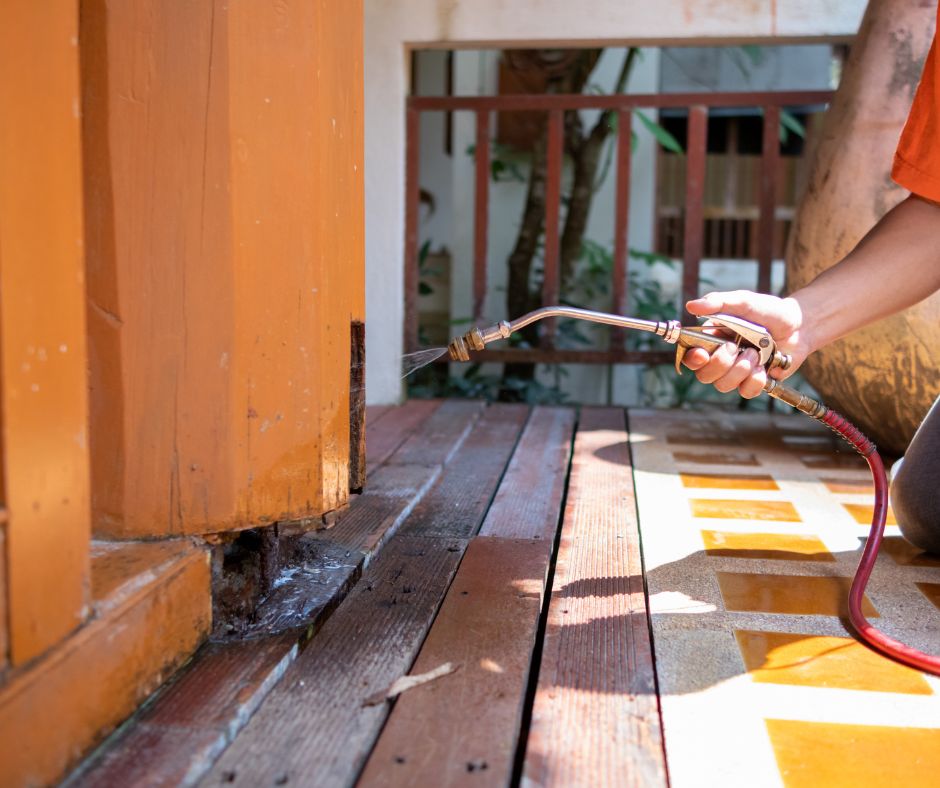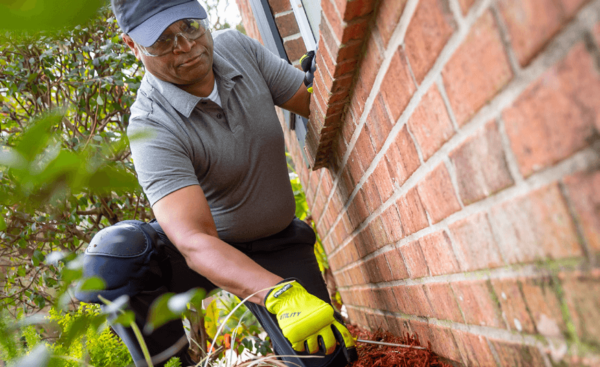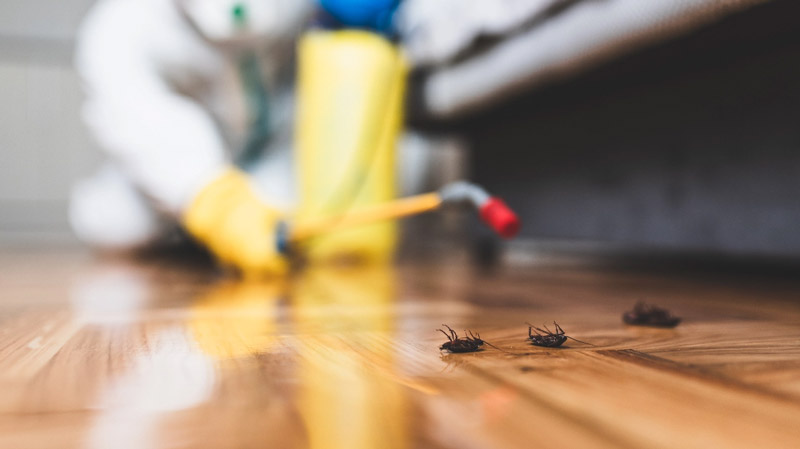Top-rated Pest Control in Charlotte County for Your Residence and Business
Learn Regarding the Most Recent Advances in Pest Control and Exactly How to Carry Out Reliable Therapy Solutions
In recent years, the field of bug control has observed significant innovations, driven by the requirement for effective and lasting treatment options. Cutting-edge methods such as Integrated Bug Administration (IPM) integrate eco-friendly methods with cutting-edge innovation, boosting both efficacy and ecological obligation.
Eco-Friendly Bug Control Options
Recently, the demand for eco-friendly pest control options has surged as businesses and property owners alike seek sustainable alternatives to traditional chemical treatments. This shift is driven by growing environmental awareness and a desire to minimize the health and wellness dangers related to synthetic pesticides.

Environment-friendly bug control techniques incorporate a variety of techniques that focus on using natural materials and methods. Integrated Pest Monitoring (IPM) is one such approach, integrating organic, social, and mechanical tactics to take care of insect populations while reducing dependence on chemicals (Wildlife removal services). This all natural technique emphasizes prevention with environment control and the intro of natural killers, therefore promoting a balanced community
An additional prominent choice is making use of herb pesticides stemmed from plants, which often tend to be less damaging to non-target microorganisms. Products like neem oil and diatomaceous earth have actually obtained traction for their efficiency in regulating pests while presenting marginal dangers to human health and wellness and the atmosphere.
Additionally, exemption techniques, such as sealing entrance factors and keeping sanitation, play a critical role in environment-friendly parasite management. By adopting these lasting methods, people and organizations can efficiently take care of bugs while advertising a much healthier planet for future generations.
Smart Technology in Insect Administration
Development is reshaping the landscape of insect administration, with wise innovation arising as a critical force in enhancing efficiency and effectiveness - Wildlife removal services. The integration of Internet of Things (IoT) gadgets, expert system (AI), and information analytics is revolutionizing how bug control experts approach infestations
Smart traps equipped with sensing units can discover bug activity in real-time, sending prompt signals to drivers. This permits prompt feedbacks, lessening damage and decreasing the need for substantial treatments. Additionally, AI formulas assess historical data to anticipate pest behavior, making it possible for positive interventions based upon ecological problems and invasion patterns.
Drones and automated lorries are likewise playing a significant function in bug management, giving airborne assessments of huge areas, identifying hotspots, and also distributing targeted therapies. These innovations not just simplify operations however likewise improve safety and security by limiting human direct exposure to potentially harmful chemicals.
Additionally, mobile applications empower customers to monitor bug activity and gain access to specialist guidance, cultivating a collaborative strategy to pest administration. On the whole, the fostering of wise technology is setting a brand-new standard in bug control, emphasizing data-driven decisions and lasting methods that inevitably benefit both experts and home owners alike.
Integrated Pest Monitoring Approaches
Integrated Pest Administration (IPM) uses an alternative strategy to pest control, combining different methods to successfully handle parasite populaces while minimizing dangers to human health and wellness and the atmosphere. IPM rotates around recognizing the pest life cycle, their natural opponents, and the environment in which they flourish.
Among the basic parts of IPM is keeping track of pest populations through normal assessments and data collection. This enables for the recognition of bug thresholds, figuring out when treatment is essential. Social techniques, such as plant environment, rotation, and cleanliness control, are crucial in minimizing bug occurrence and advertising plant health.
Mechanical controls, consisting of barriers and traps, are additionally essential in IPM. These approaches can physically remove or deter parasites without using chemicals. When required, the cautious application of chemical controls is employed, concentrating on targeted treatments that minimize environmental effect.
Education and learning and collaboration among stakeholders, including farmers, pest control specialists, and the community, are important for the effective execution of IPM techniques. By prioritizing lasting practices, IPM not just addresses pest concerns yet likewise fosters a much healthier ecosystem.
Biological Control Approaches
Many biological control techniques are increasingly identified for their performance in taking care of insect populaces while promoting eco-friendly balance. These strategies harness natural killers, parasites, and virus to reduce pest numbers without counting on synthetic chemicals. The introduction of ladybugs can effectively control aphid populaces, while nematodes target soil-dwelling bug larvae.
Additionally, the use of microbial chemicals, such as Bacillus thuringiensis (Bt), provides an eco-friendly option for taking care of caterpillar insects. These items specifically target pest varieties, reducing injury to advantageous bugs and pollinators. Furthermore, preservation organic control stresses enhancing habitats for natural opponents, such as birds and helpful insects, therefore encouraging their presence in farming systems.
Research remains to expose cutting-edge strategies within this area, such as using pheromones to disrupt pest mating patterns or the advancement of biocontrol representatives with hereditary design. Carrying out these approaches can bring about sustainable pest management practices that mitigate the reliance on chemical treatments, ultimately fostering healthier communities. As awareness of these techniques grows, they are becoming integral components of incorporated parasite monitoring (IPM) methods, using a balance between efficient insect control and environmental stewardship.
DIY Bug Control Solutions
As home owners look for efficient ways to take on parasite problems, do it yourself bug control options have gained appeal for their availability and cost-effectiveness. These methods encourage people to deal with check my site infestations making use of easily offered materials and techniques, often without the demand for expert intervention.

Furthermore, preserving proper hygiene and routine evaluations can prevent parasite access and nesting (Wildlife removal services). Straightforward techniques, such as securing fractures, removing food resources, and decluttering, can significantly diminish bug populations. Traps, her explanation both homemade and readily offered, can additionally supply reliable services for monitoring and managing specific parasites like rodents or pests

Final Thought
The integration of eco-friendly parasite control choices, smart modern technology, and cutting-edge administration strategies offers an extensive approach to reliable insect monitoring. By accepting Integrated Pest Monitoring (IPM) and utilizing organic control techniques, along with DIY remedies, liable and sustainable insect control can be attained. These improvements not just improve the performance of pest monitoring practices yet likewise add to a healthier setting. Executing these strategies promotes a well balanced environment while efficiently addressing pest populaces.
Green pest control methods include an array of approaches that prioritize the use of natural substances and practices. Integrated Insect Administration (IPM) is one such technique, incorporating organic, social, and mechanical techniques to take care of bug populaces while lowering dependence i thought about this on chemicals. As recognition of these strategies expands, they are ending up being indispensable parts of incorporated bug monitoring (IPM) approaches, using an equilibrium between effective pest control and environmental stewardship.
The assimilation of eco-friendly pest control alternatives, clever innovation, and ingenious management strategies presents an extensive approach to reliable bug administration. By embracing Integrated Pest Monitoring (IPM) and using biological control methods, along with DIY solutions, lasting and accountable parasite control can be accomplished.